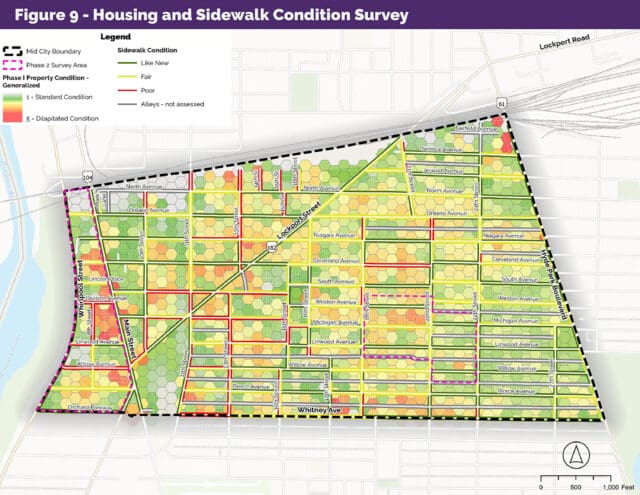Planning for Housing Success: How Municipalities Can Lead the Way



Across the country—whether in urban centers, suburban neighborhoods, or rural towns—municipalities are struggling with a shortage of affordable, suitable, and quality housing. State governments are launching ambitious housing initiatives, while local communities face the challenges of aging housing stock, rising costs, and shifting demand.
Recent investments highlight both the urgency and the opportunity: New York recently announced a five-year, $25 billion plan to create or preserve 100,000 affordable homes; Massachusetts signed a $5.16 billion Affordable Homes Act into law in 2024 to expand resources that support first-time homebuyers and homeownership; Pennsylvania launched the Whole-Home Repairs Program in 2022 to stabilize and preserve existing housing; and Maryland continues to grow its Rental Housing Works Program to finance affordable rental development. This momentum reflects a growing recognition that housing is essential economic infrastructure, and municipalities must position themselves to capture these investments.
Local governments can respond proactively to address these challenges and take advantage of new opportunities. Communities should strategically assess housing conditions, understand future demand, and prepare projects capable of competing for state and federal support.
Why Housing Assessments Matter
Municipalities that proactively assess housing needs are better positioned to:
- Diagnose pressing issues, including affordability gaps, structural disrepair, and mismatched supply.
- Strategize for long-term growth by identifying the housing types and price points needed over the next 10 to 20 years.
- Prioritize investment by pinpointing where public and private dollars will yield the most benefit.
- Access competitive funding through programs such as Pennsylvania’s Whole-Home Repairs Program, New York State’s Pro-Housing Communities Program, and Massachusetts’ HousingWorks Infrastructure Program.
Key Components of a Comprehensive Housing Assessment
1. Site Suitability Analysis
Forward-thinking municipalities across the United States are using Geographic Information Systems (GIS) and custom modeling tools to identify priority development sites. A leading-edge example of this approach was implemented in Herkimer County, New York, where LaBella Associates partnered with the County’s Industrial Development Agency to evaluate potential sites for housing development. The study used advanced GIS modeling and a Python-based scoring tool to assess infrastructure access, zoning compatibility, and environmental constraints.

2. Building Condition Surveys
Aging housing stock is a common challenge in older industrial cities. Parcel-level condition surveys that use U.S. Department of Housing and Urban Development-aligned criteria help communities identify substandard and dilapidated homes, prioritize reinvestment, and bolster funding applications. These surveys have supported targeted demolition, rehabilitation, and neighborhood revitalization, while also enabling communities to secure funding—such as Community Development Block Grants—to continue these efforts.

3. Housing Demand Forecasting
Demand forecasting is one of the most critical and forward-looking components of a comprehensive housing assessment. It goes beyond basic population projections by analyzing how demographic changes, lifestyle preferences, and consumer behavior will shape future housing needs. A key tool used in this analysis is Tapestry Segmentation, a nationally recognized psychographic model developed by Esri.
By using segmentation models, communities can better understand the types of households they currently serve—and anticipate how those household profiles may change over time. When combined with local housing data, this insight allows for more accurate projections of future needs by unit type, size, tenure (rent vs. own), and affordability level.
The result is a strategic and informed approach to planning. Municipalities are better equipped to craft housing strategies that address current conditions while also preparing for long-term shifts in population and demand.
4. Short-Term Rentals and Market Disruption
Short-term rentals (STRs), such as Airbnb and Vrbo listings, can significantly impact housing availability, especially in tourism-heavy or rural counties. Housing assessments that track investor-owned vacation properties help municipalities monitor impacts, craft regulatory responses, and protect local rental markets for residents.
5. Equity and Vulnerable Population Assessments
Equity is a cross-cutting issue in housing. Many recent studies now include focused assessments of vulnerable groups such as seniors, people with disabilities, veterans, and cost-burdened households. Rates of cost-burdened renters are rising across many communities. By mapping these populations, municipalities can develop policies and funding applications that directly address the needs of those most at risk.
6. Foreclosure and Derelict Property Assessments
Vacant and abandoned properties pose challenges in communities ranging from Massachusetts mill towns to rural Pennsylvania counties. To measure the extent of the problem and guide reinvestment strategies, many municipalities are using foreclosure and derelict housing assessments.
In Wayne County, New York, the County partnered with LaBella Associates to create a comprehensive Derelict Housing Strategy. The effort began with a countywide inventory of vacant, abandoned, and tax-delinquent properties. From this database, three Strategic Areas were identified—locations where clusters of distressed properties posed significant challenges but also offered meaningful opportunities for revitalization. For each area, detailed existing conditions reports and tailored redevelopment plans were prepared.
At the same time, an economic and market analysis was conducted to uncover the systemic drivers of disinvestment. The final strategy delivered a robust set of policy and program recommendations aimed at addressing current dereliction and preventing future decline.

Taking Action: What Communities Should Do Next
The housing crisis is not limited to any one state—it is a national challenge that requires local action. By investing in comprehensive housing assessments today, municipalities can prepare for the future while positioning themselves to secure millions in state and federal funding.
To remain competitive and meet local needs, municipalities should:
- Conduct or update a housing needs assessment every five to seven years, including site suitability mapping, condition surveys, and demand modeling.
- Integrate housing planning into zoning reform, capital investment, and infrastructure upgrades.
- Inventory derelict and foreclosed properties, with prioritization criteria for redevelopment.
- Engage residents and stakeholders through surveys, focus groups, and transparent public reporting.
- Align assessments with funding programs such as the Affordable Homes Act in Massachusetts, the Whole-Home Repairs Program in Pennsylvania, the Pro-Housing Communities Program in New York, and the Rental Housing Works Program in Maryland.
Housing is a community’s foundation—and with the right data and strategy, it can be the catalyst for transformation.
As Featured In
Talk of the Towns
A version of Planning for Housing Success: How Municipalities Can Lead the Way was published in the September/October 2025 issue of the New York Association of Towns’ Talk of the Towns magazine.
View The Magazine Here

About the Author
Derik Kane, AICP, CNU-ASenior Planner
Insights by Derik Kane, AICP, CNU-A:
As LaBella’s lead planner in the Buffalo office, Derik brings nearly two decades of experience in both the public and private sectors. A certified planner, his expertise covers a wide range of projects, including downtown revitalization, economic and market analysis, comprehensive planning and zoning, housing, smart growth, trails and open space planning, transportation and pedestrian accessibility, and agricultural and farmland protection. Throughout his career, Derik has collaborated with municipalities, community groups, and agencies to build consensus-driven visions and strategies that deliver lasting impact.
